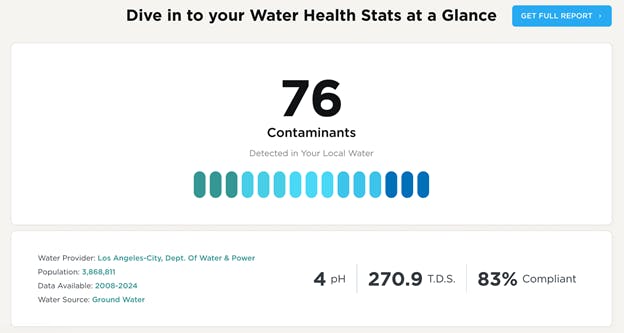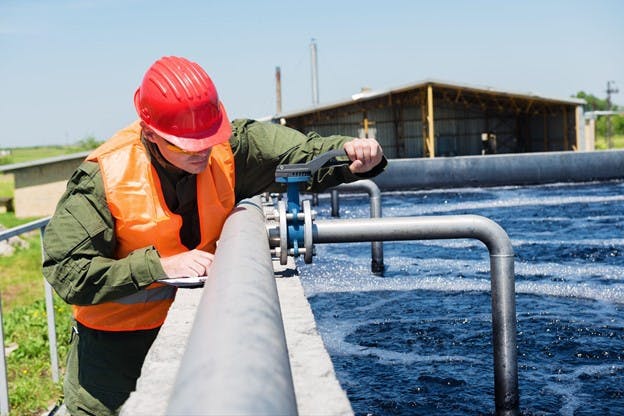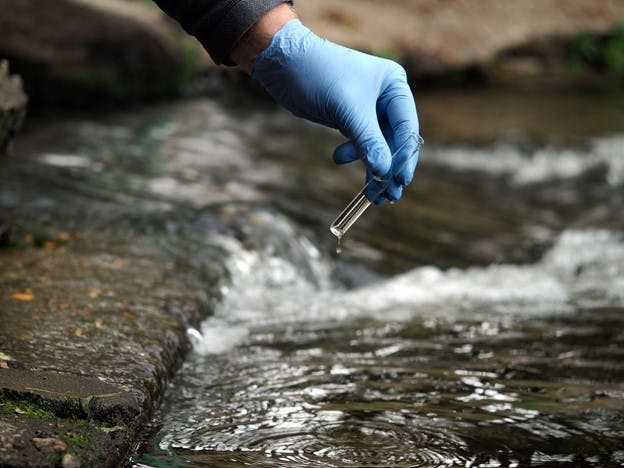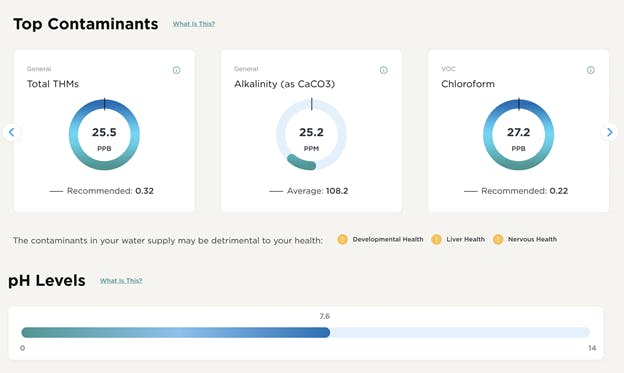🌟 New Arrival! Upgrade Your Water with Our Advanced Pitcher Filter. Shop Now
March 2024
How to Check Your Water Quality Report by ZIP Code
The quality of your drinking water affects everything from your skin, hair, and teeth to your overall health and lifespan. But many of us are unaware of issues with our local water system and what effect contaminated tap water can have on human health.
From beneficial minerals to harmful byproducts, tap water can contain chemicals like fluoride that have public health benefits as well as contaminants that introduce health risks. Checking your local water quality report can give you peace of mind about your water quality — or help you determine what contaminants you need to filter out.
Here’s what you need to know about water quality reports, including where to find them, how to interpret them, and how to choose the right water filter for your home.
What Is a Water Quality Report?
A water quality report helps you determine what’s in your tap water and if it’s safe to drink. For example, the U.S. Environmental Protection Agency (EPA.gov) requires community water systems to produce an annual drinking water quality report called a Consumer Confidence Report (CCR). This tells you:
- The source of your drinking water supply, such as surface water or groundwater
- Any drinking water contaminants that were found and how the level of detected contaminants compares to national drinking water regulations
- Any health risks associated with drinking contaminated water and how you can protect against waterborne diseases
- Additional information such as the water treatment and disinfection techniques that your local water system uses
Although your local water service is required to deliver a water quality report each year, it’s usually only sent to consumers who pay their water bill directly. Renters who don’t pay their own water bill and those with a private water well may not receive it.
You can also check your water quality report online. HomeWater’s Water Quality Report makes it easy to check your water quality by ZIP code.
You’ll learn about contaminants in your drinking water, how the highest level of each contaminant compares to drinking water standards, and recommended products to treat specific health concerns.

What Can You Learn from a Water Quality Report?
A water quality report provides several useful pieces of information, including general information such as where your drinking water comes from, as well as how it’s tested and treated. Finding out the source of your local drinking water is important, because different types of water sources are linked to different health concerns.
For example, watersheds in industrial or agricultural areas may be at a higher risk of containing certain chemicals or pesticides, while private water wells may contain high levels of minerals and heavy metals like arsenic. Some regions are known for having hard water, which isn’t a major health concern, but can affect the taste of water and leave residue on your hair, skin, or clothes.
Your water quality report will also tell you how your water is treated. Although water treatment can remove harmful chemicals and microorganisms, it can also introduce other contaminants and chemical byproducts. Chlorine, haloacetic acids, and total trihalomethanes (TTHMs) can all arise during the treatment process, and can be harmful to human health if they exceed safe levels.

What Won’t a Water Quality Report Tell You?
A water quality report won’t tell you everything about the water coming out of your tap, because it’s still possible for it to pick up contaminants after it leaves the water main.
If you have a private well or live in an older home, it’s important to test your own tap water for heavy metals like lead or arsenic. The Safe Drinking Water Act (SWDA) and the Lead and Copper Rule require community water systems to monitor for lead, but some older homes have lead pipes that present a major health risk.
Tap water can also pick up other contaminants along the way to your home, including rust, sediments, and microorganisms. And there are some unregulated contaminants like microplastics and PFAS that aren’t regularly tested for yet.
You can test your own tap water by using an at-home test or sending a water sample to a certified lab for a more detailed analysis.
How Do You Interpret a Water Quality Report?
A water quality report contains a lot of charts and figures based on tests performed at various treatment plants along the way from the water source to your home. Although this level of detail is important, it can be hard for consumers to figure out what these numbers mean and if their water is safe to drink.
Some of the information you’ll find include:
- Maximum Contaminant Level (MCL)/Maximum Residual Detection Level (MRDL): These figures refer to the highest level of a contaminant or chemical byproduct allowed under EPA guidelines.
- Maximum Contaminant Level Goal (MCLG)/Maximum Residual Detection Level Goal (MRDLG): These figures represent a target that’s lower than the MCL but not enforceable under drinking water standards.
Ideally, the level of each contaminant found in your tap water will be lower than both figures. Still, the EPA’s standards don’t always reflect the most health-conscious or up-to-date approach to drinking water safety.
The Environmental Working Group (EWG)’s recommendations are often stricter than the EPA’s regulations, and some consumers may want to refer to these instead.

What Is Home Water’s Water Quality Report?
If you’re struggling to make sense of your local water quality report, get your free Water Quality Report from HomeWater. HomeWater provides a helpful guide to water quality for each ZIP code, with handy visuals so you can see how the data stacks up.
First, you’ll see the number of individual contaminants detected in your drinking water, followed by the pH level (a measure of acidity) and the amount of total dissolved solids (TDS) in the water, which can tell you whether you have hard or soft water. You’ll also see a percentage of how well it complies with national drinking water standards.
Next, you’ll see a list of the top contaminants in your drinking water, how they can affect your health, and what you can do to reduce them. For example, Portland’s water quality report shows high levels of total trihalomethanes (TTHMs): 25.5 parts per billion (PPB), compared to the recommended level of 0.32 ppb.
The report shows that TTHMs can affect the liver and kidneys, as well as developmental and immune health. It also shows you what type of home water filter is best for reducing TTHM levels: in this case, a reverse osmosis under counter water filter.

How Do Home Water Filters Work?
If your local water quality report shows high levels of contaminants, or you just want to improve the taste of your tap water, then you can use a home water filter to reduce or eliminate common chemicals, minerals, and microorganisms. The right type of water filter will depend on which contaminants are present and in which quantities.
If you only need to filter your drinking water, you can use an under sink water filter or refrigerator water filter. If you have hard water, use a bathroom water filter or a water softener to remove minerals before bathing or doing laundry.
The most effective types of home water filters include:
Activated carbon filters use a carbon-based material such as wood or coconut shells to physically filter out contaminants. Activated carbon is porous, with a large surface area, so it traps tiny particles and other impurities. Carbon filters are effective at removing or reducing chlorine, pesticides, volatile organic compounds (VOCs), and more.
A catalytic carbon filter can be even more effective at improving the taste and smell of your water because it breaks down unwanted chemicals like hydrogen sulfide.
Reverse osmosis filters use a membrane with tiny pores as small as 0.0001 microns to filter out contaminants and impurities, including bacteria like E. coli. Reverse osmosis filters are also effective at removing heavy metals like lead and arsenic, making them effective for homes with a private well or contaminated groundwater.
Distilled water filters work by turning water into water vapor so that all its minerals are left behind. This process removes up to 99.9% of chemicals and impurities. While this may sound good, our bodies need minerals like calcium and magnesium to survive, so it’s best not to use distilled water for daily drinking.

How Often Should You Check Your Water Quality Report?
Some parts of the U.S. are known for having high-quality tap water, while others have a reputation for water that tastes bad or is unsafe to drink. Before moving to a new city or state, check the water quality report for your new home’s ZIP code to find out if there are any contaminants of concern that you should know about.
Once you’ve moved in, it’s a good idea to check your water quality report at least once a year and test your tap water occasionally. Even in the same watershed, water treatment practices can change from year to year, and your water may come from different water sources or treatment plants depending on the season.
For example, Salt Lake City relies on surface water in the summer when it’s available, but switches to groundwater in the winter when supplies run out. Although the water is still considered safe to drink, it may have a “harder” taste due to its mineral content.
You can test your tap water for chemicals like chlorine using an at home testing strip or use a TDS meter to check for total dissolved solids. For heavy metals such as lead and arsenic, send your water into a certified lab to get the most accurate results.
Once you know which contaminants your tap water contains, choose a water filter like the UPSTREAM 4-Stage Whole Home Water Filter to reduce or remove them.
Related Articles
February 2024
Arsenicosis: The Hidden Dangers of Arsenic Toxicity
February 2024